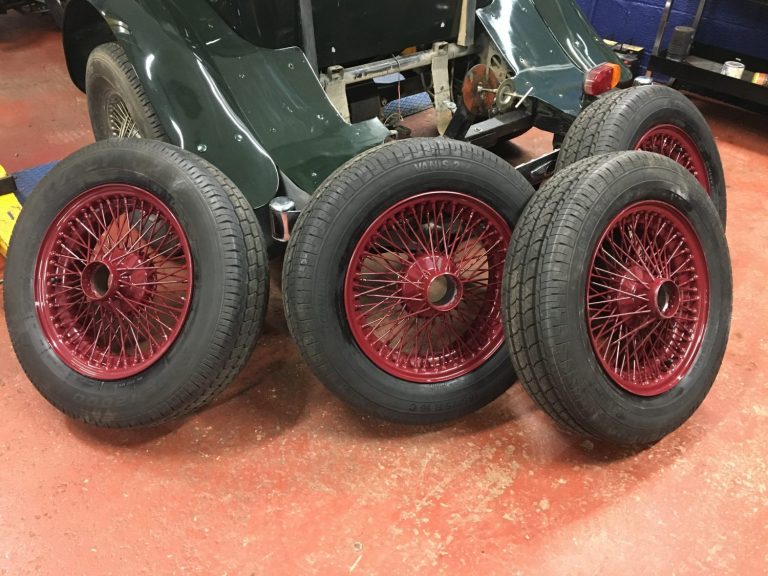
Transforming the look of the wire wheels
As part of the project to improve the overall look of our 1949 Bentley Special we decided to re-colour the wire wheels in a deep red finish. A lot of the racing cars from the era used this colour wheel

Managing Director – Bridge Classic Cars

As part of the project to improve the overall look of our 1949 Bentley Special we decided to re-colour the wire wheels in a deep red finish. A lot of the racing cars from the era used this colour wheel
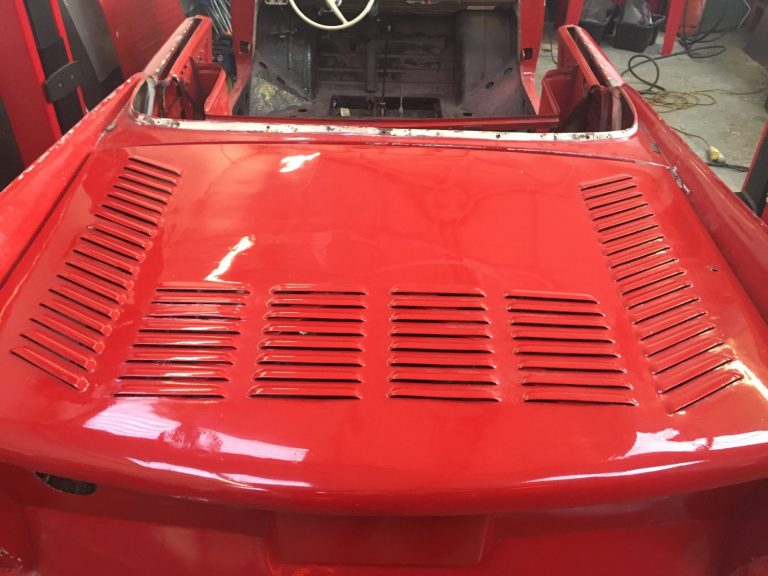
[vc_row][vc_column][vc_column_text]We are taking lots and lots of images whilst stripping down our 1965 Amphicar. It is critical on all restoration projects to take as many pictures as you can as these may come in very useful when rebuilding the car.
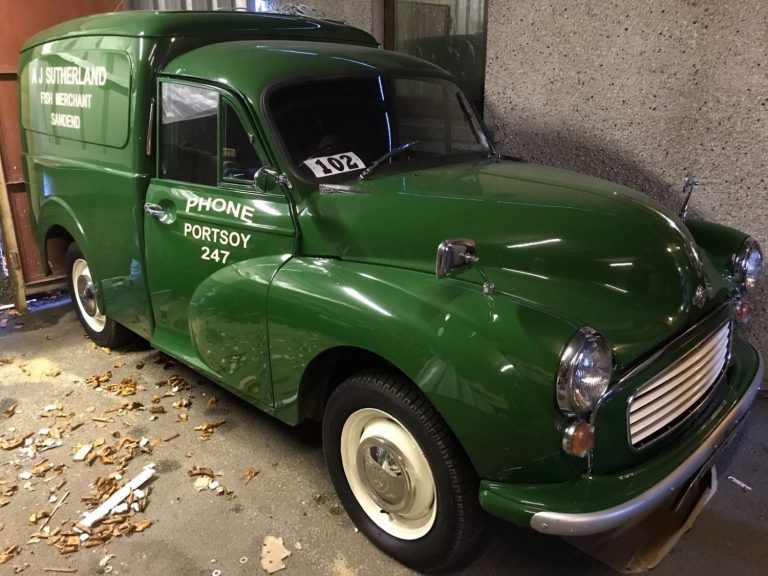
Due in soon are three new additions to the Bridge Classic Cars family. Currently residing in the north of Scotland, all in the one private garage we have a 1967 Austin A35, 1957 Morris 1000 Van, 1960 BSA. We originally
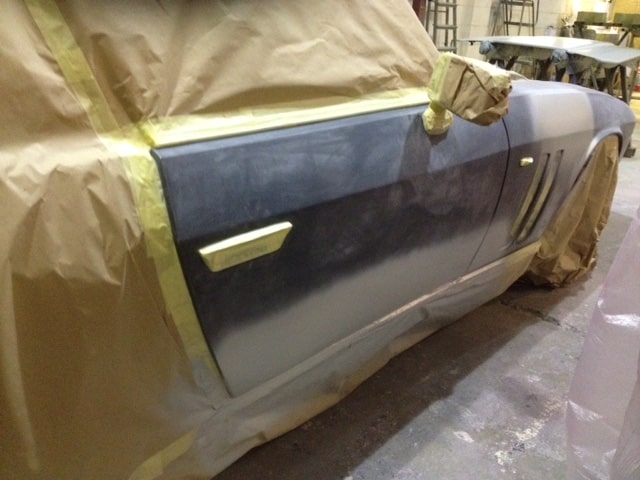
We are making good progress on our 1969 Jensen FF bodywork preparation. Unfortunately age has gotten the better of the offside door so what we thought would be a relatively easy part of the project to correct a slight paint
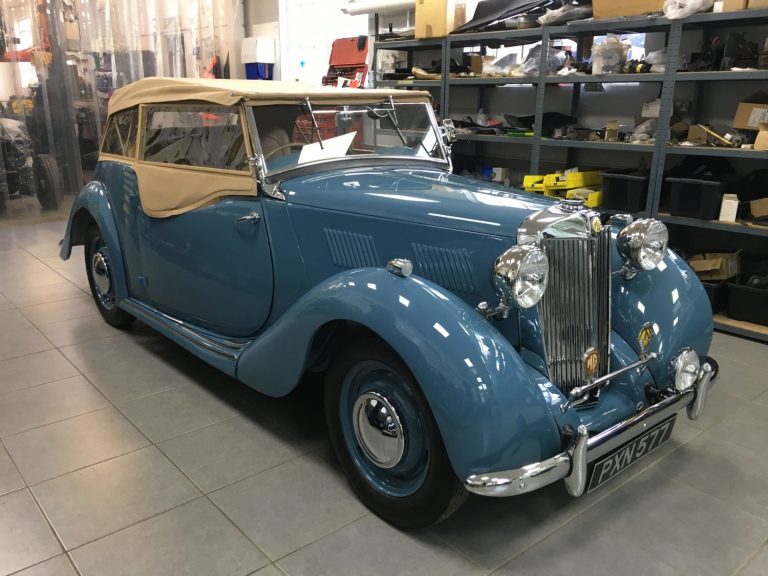
[vc_row][vc_column][vc_column_text]A little over a year ago we took a call from an excited Mr McDonald who had just received confirmation that he was now the proud owner of an original, 1 owner, 1949 MG YT. At the time, the car
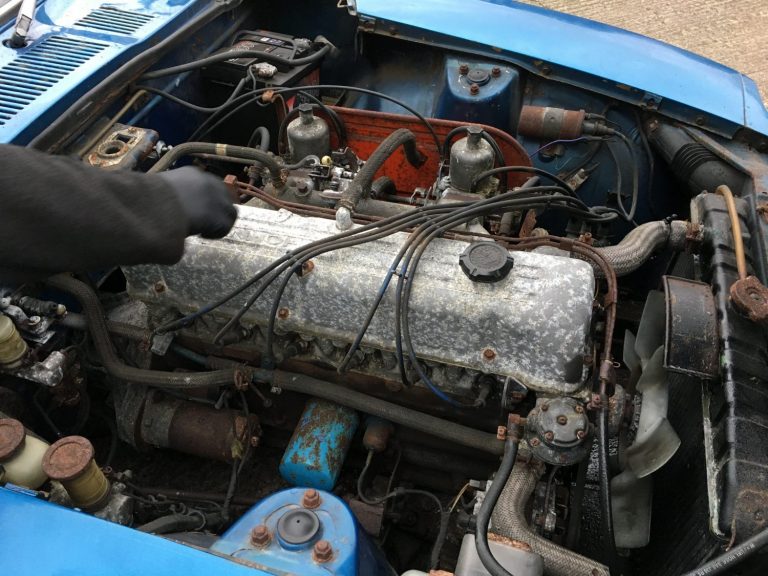
[vc_row][vc_column][vc_column_text]It’s been a while but we were assured by the previous owner that the engine did run so we thought we’d spend a bit of time this morning seeing if that was indeed was the case…[/vc_column_text][/vc_column][/vc_row][vc_row][vc_column][vc_video link=”https://www.youtube.com/watch?v=2JWf64_6mFM”][/vc_column][/vc_row][vc_row][vc_column][vc_column_text]…and with a little
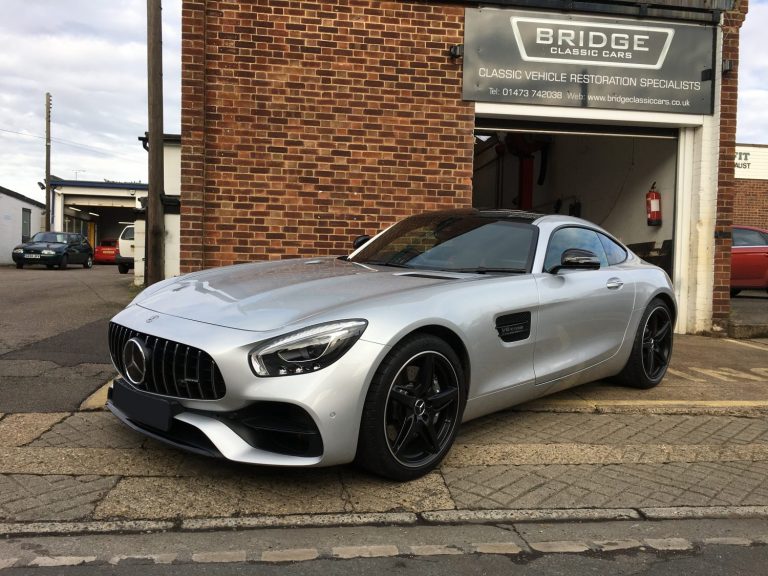
With the youngest member of the Ranson family, little Loick, now coming up to 7 months old, will he be having the same conversations that I have with my Dad in many years to come. Better still, will little Loick
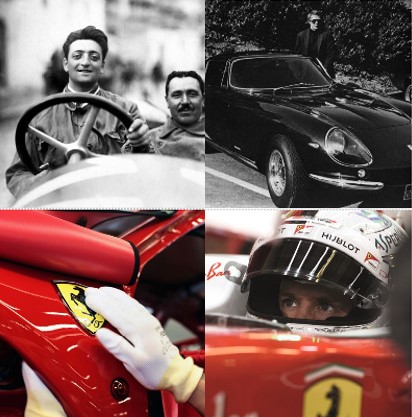
Come and race through 70 years of passion, glamour and design innovation, with unique behind-the-scenes access to one of the most iconic car brands at the Design Museum. Experience every extreme high and low, from the beginning to the present.
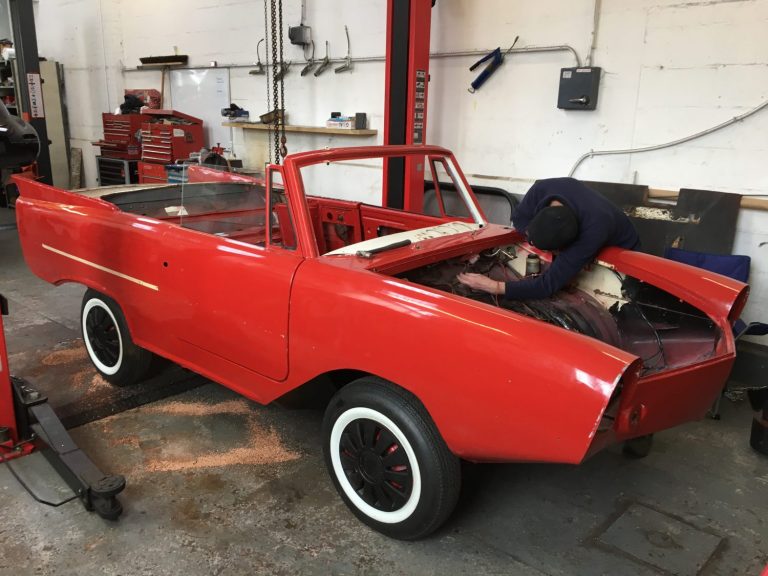
[vc_row][vc_column][vc_column_text]With the engine now out of the car Dave can concentrate on removing the final remaining pieces ready for the body shop to take over.[/vc_column_text][/vc_column][/vc_row][vc_row][vc_column][vc_gallery type=”image_grid” images=”16236,16237,16238,16239,16240,16241,16242,16243,16244,16245,16246,16247,16248,16249,16250,16251,16252,16253,16254,16256,16257,16259,16260″][/vc_column][/vc_row]
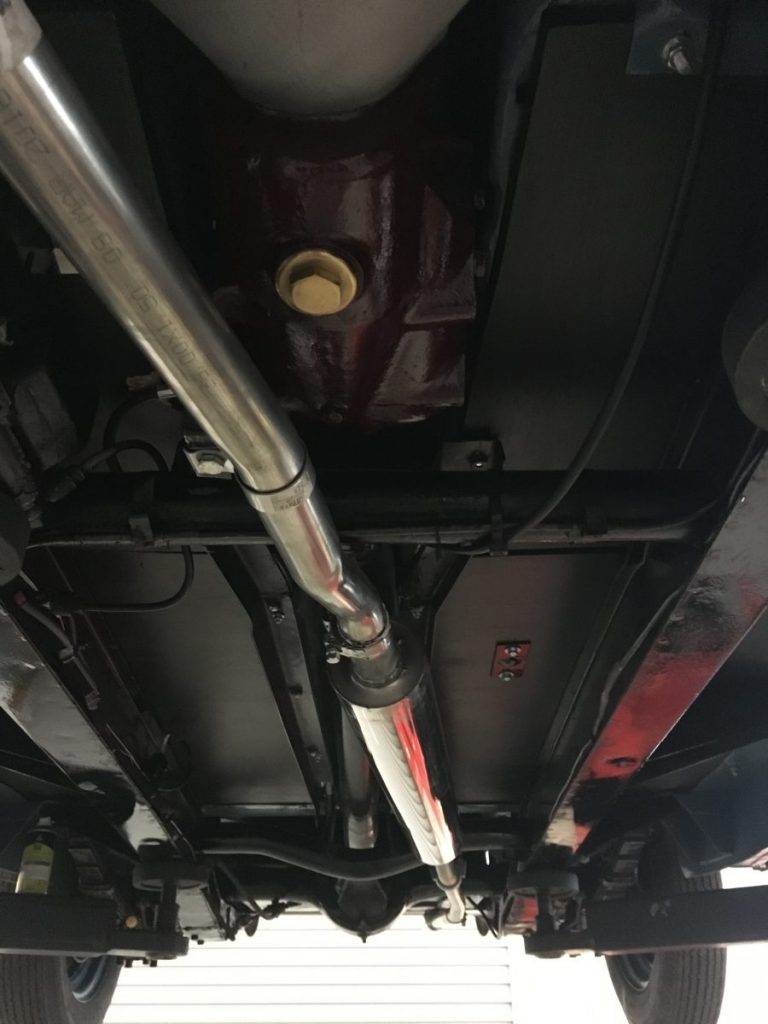
Throughout the build, we have taken lots of pictures of the exterior of our 1949 MGYT but probably not so many of the underside. As we have her on the ramp to check over everything now is the perfect opportunity
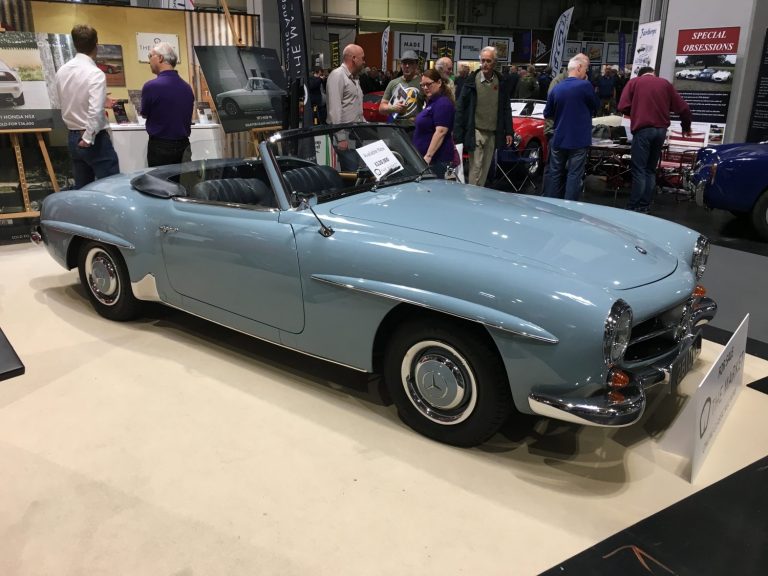
[vc_row][vc_column][vc_column_text]Last Saturday Bridge Classic Cars joined the thousands of visitors at the UK’s biggest annual classic car show; The Lancaster Insurance Classic Motor Show 2017 held at the Birmingham NEC. It is incredible to see just how large the show has grown, this
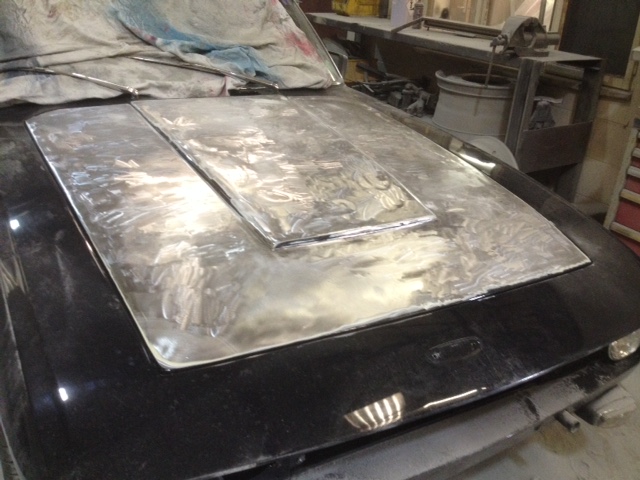
We’ve received more images from the body shop of our Jensen FF bonnet and wing being stripped back.
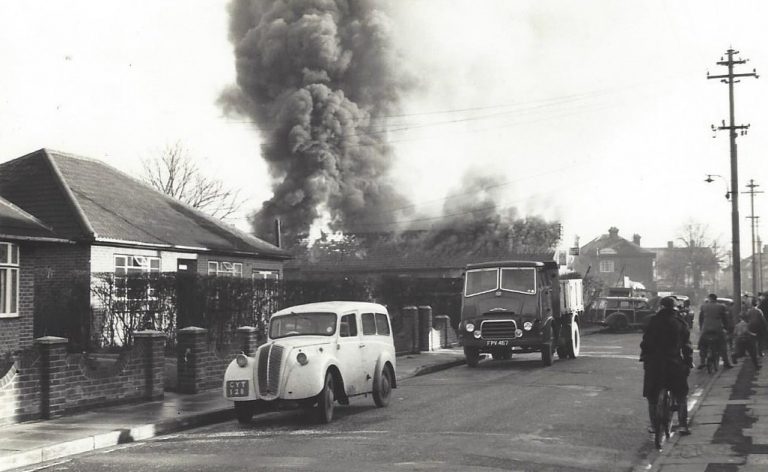
We’ve received some fantastic images today of our building on Deben Road back in what we believe was the 60’s. As you can see, it’s not looking at it’s best but still great to see and know the history.
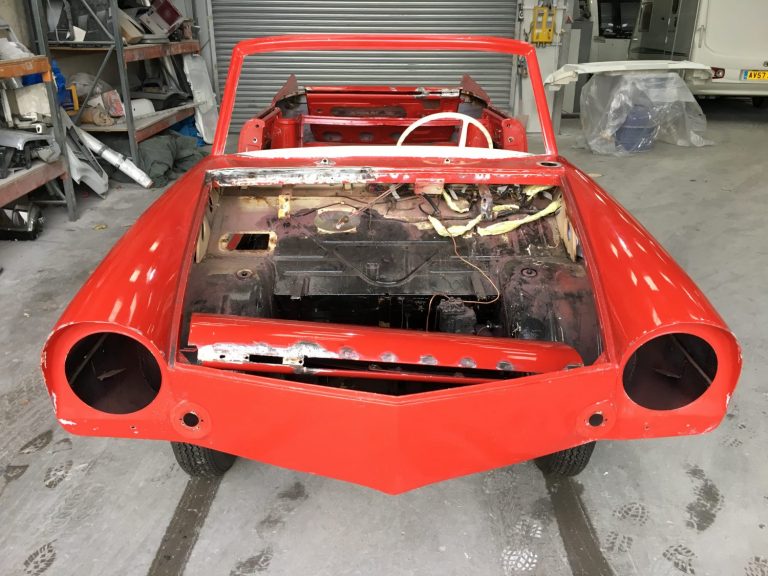
[vc_row][vc_column][vc_column_text]After years in storage we are now underway with the restoration of our 1965 Amphicar. Today we are running up and testing our the engine and propeller system to ensure it functions as it should.[/vc_column_text][/vc_column][/vc_row][vc_row][vc_column][vc_video link=”https://www.youtube.com/watch?v=u0Bb2a6J4Wo”][/vc_column][/vc_row][vc_row][vc_column][vc_video link=”https://www.youtube.com/watch?v=QOdTWQZIl64″][/vc_column][/vc_row]
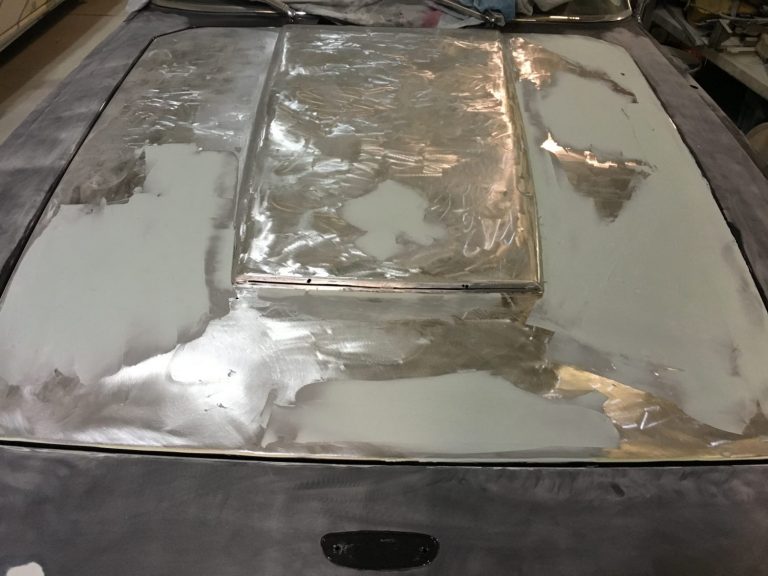
Work is well underway now on our 1969 Jensen Interceptor FF. She’s in for some paintwork issues that need our attention on the front, in particular the bonnet and off side wing. This work involves stripping back and respraying the
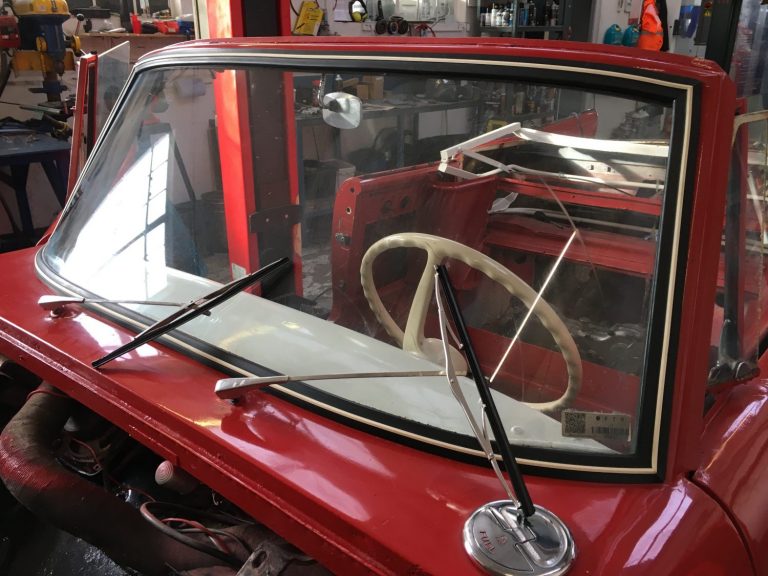
[vc_row][vc_column][vc_column_text]Dave is now well on with stripping back our 1965 Amphicar ready for paint. We have since discovered that the original colour was white and not red as we first thought so we will be reverting back to the original
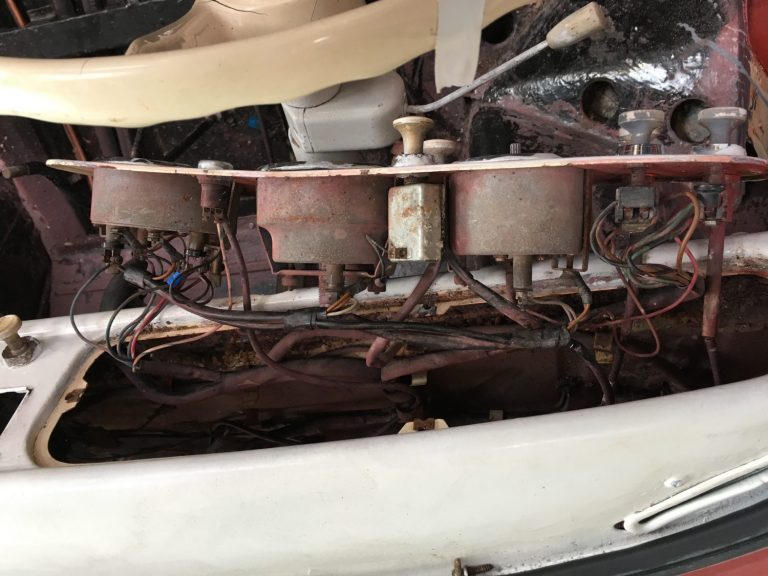
[vc_row][vc_column][vc_column_text]As we always say, it is very important to take lots of pictures when carrying out a restoration. Angles you don’t think are important and areas you think may be easy to refit can sometimes come back to bite you.
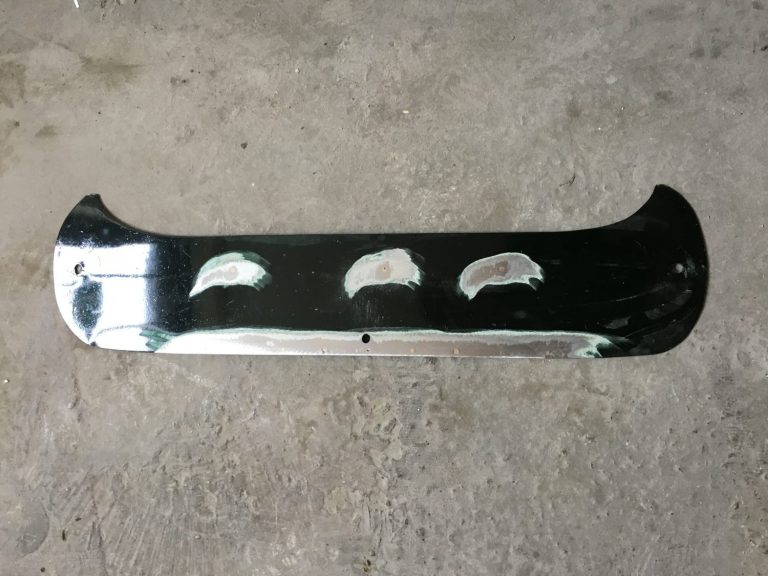
Whilst the aluminium parts are off the vehicle being polished it was a good opportunity for us to improve a couple of small areas that require paint. The steel straps that hold in the fuel tank have been hand painted
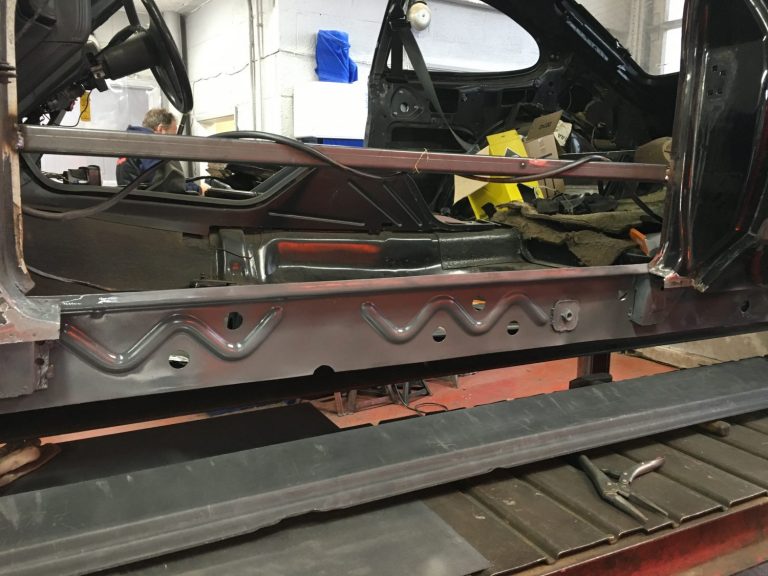
Now the majority of the ‘cutting out’ has been done Asa has securely fitted up the inner sill on the near side of our 1983 Ford Capri. Here we have the offside sills now removed. The outer sills have now
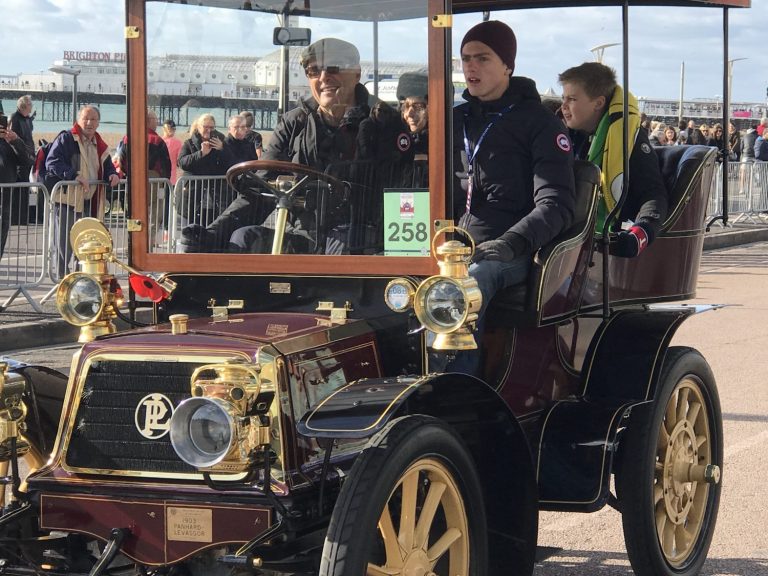
[vc_row][vc_column][vc_column_text]More than 120 years after the very first run was held, last Sunday saw 2017’s Bonhams London to Brighton Car Run and Bridge Classic Cars was there to experience the event for ourselves. We even bumped into some familiar faces
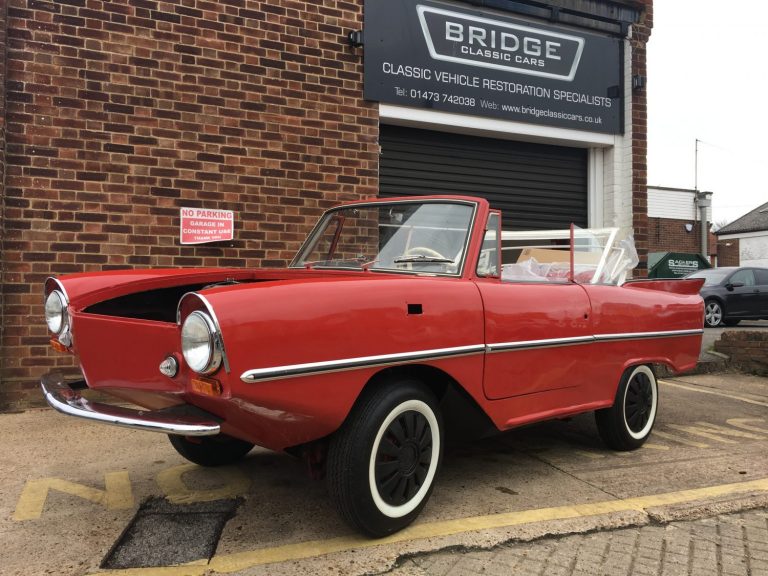
[vc_row][vc_column][vc_column_text]Day 1 of owning our 1965 Amphicar and already we are getting stuck in to stripping her ready for a full body preparation and re-spray. Lots of photos of this project I think. Photographs are a great referencing tool, an
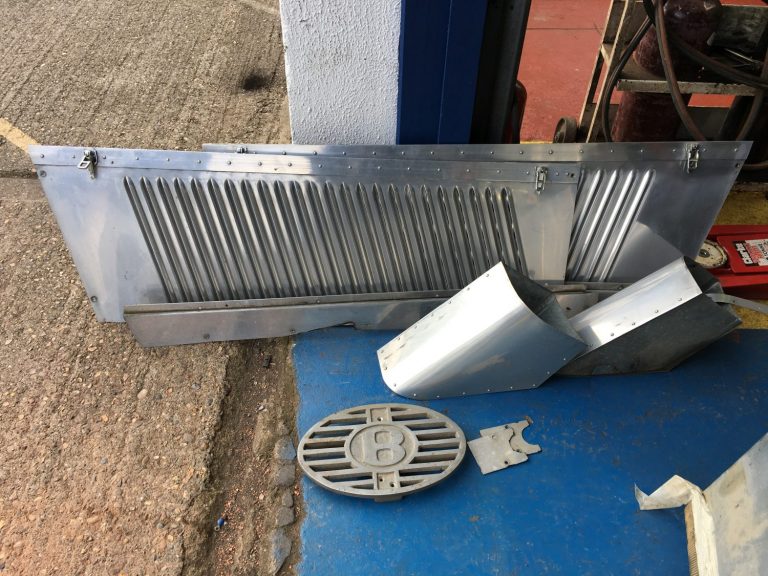
[vc_row][vc_column][vc_column_text]This afternoon we removed the large items of aluminium from the car ready to transform them with a good polish. We’ve drafted in the help of our good friend Tony and the guys at Wyatt Polishing to complete this task.
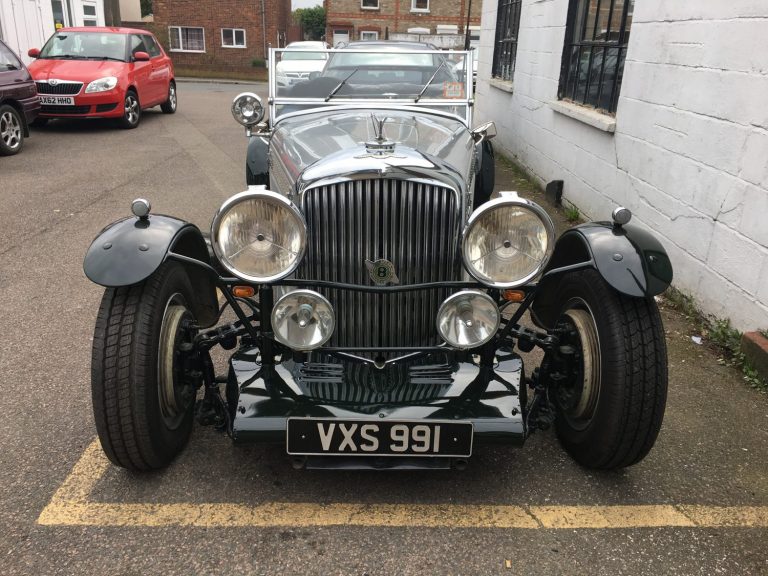
Work is now underway on our 1949 Bentley Special Mark VI. Our work is very minimal on this project. Mechanically she is fantastic but we felt that a few small alterations to the look would make a huge difference. The
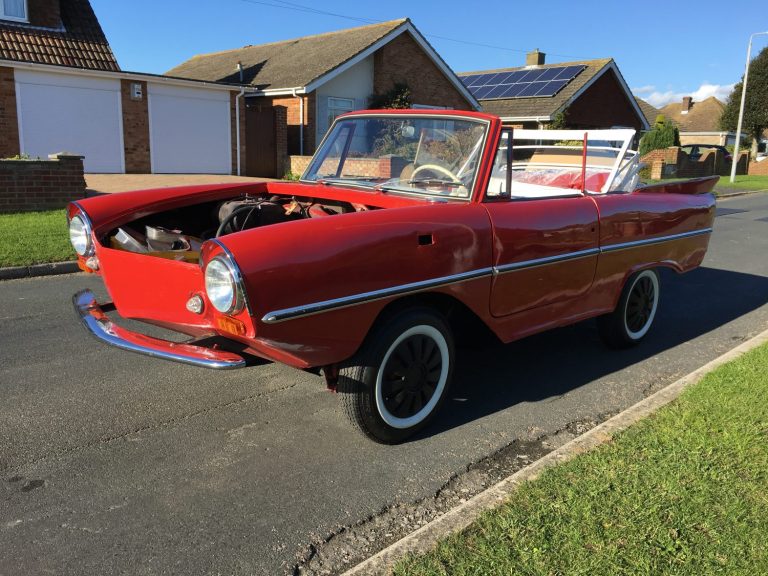
It was a long day for Craig and Dave as they set off for what should’ve been a relatively easy trip to Brighton. We had our 1973 Jaguar E-Type to deliver and returning with our 1949 Bentley Mark VI Special
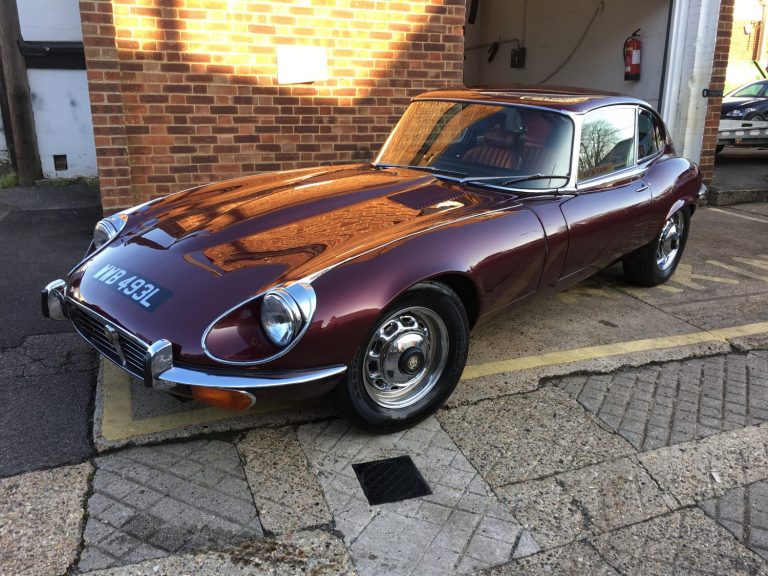
Our 1973 Jaguar E-Type 2+2 Series 3 arrived with us needing very little. She was very much a usable car so a quick re-tune to the engine before a thorough clean and detail and she was good to go. Her
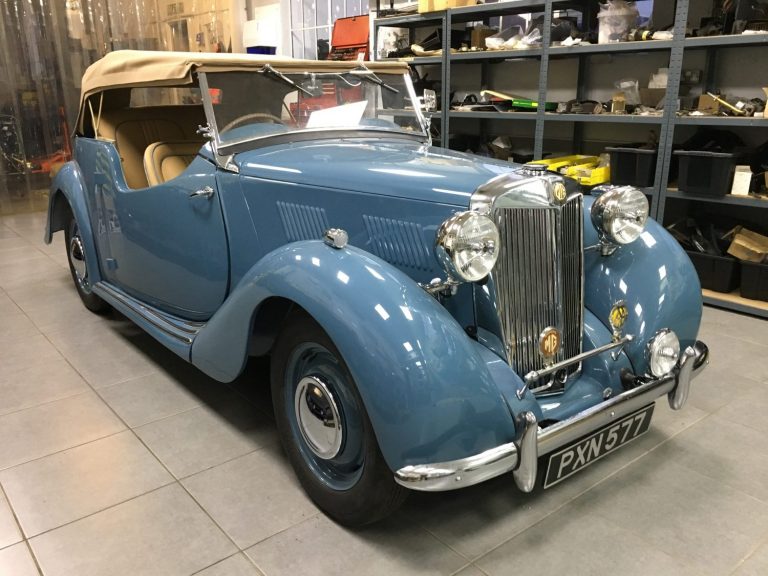
[vc_row][vc_column][vc_column_text]We have now so close to completion on our 1949 MGYT restoration project. We are just waiting on a part to be manufactured for the side screens and then our final task is the jacking ram system. Having sourced a
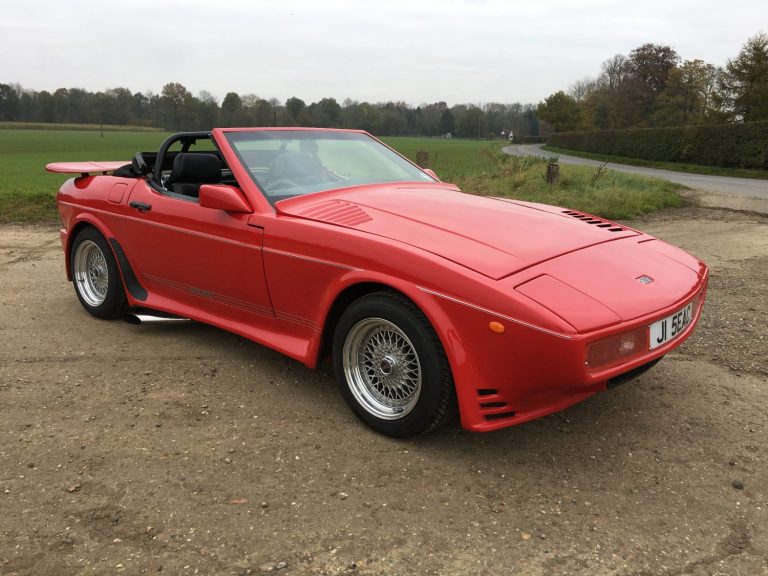
[vc_row][vc_column][vc_column_text]It’s collection day of our 1991 TVR SEAC and we couldn’t resist taking our newest addition out for an extra long drive. On the way back from East Bergholt our first stop was Raydon airfield for a photo opportunity. [/vc_column_text][/vc_column][/vc_row][vc_row][vc_column][vc_gallery
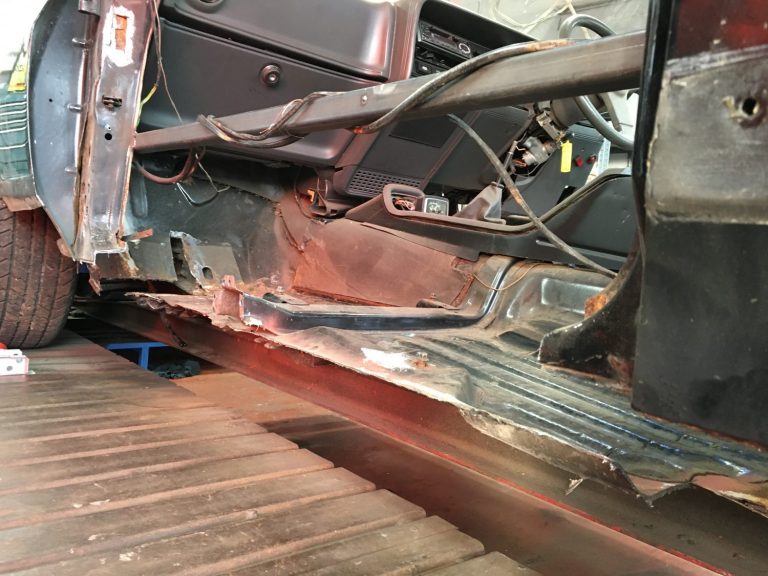
The Near-side inner and outer sill has now been completely removed from the vehicle ready for it to be replaced with new. The body panels are now in stock with us so Asa will be busy piecing the car back
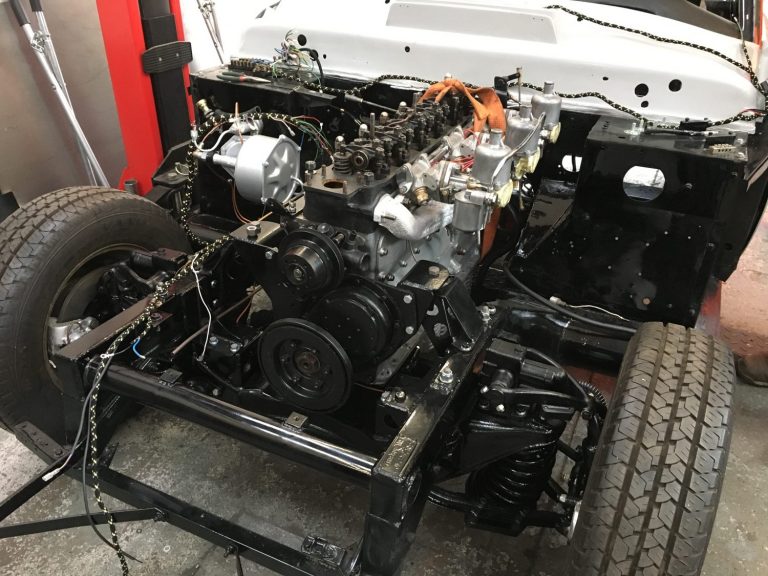
It was a tight squeeze but our 1960 Jensen 541S prototype engine is now back in the car ready for the ancillaries to be fitted back up. All of the brake and fuel lines are in as is the gearbox,
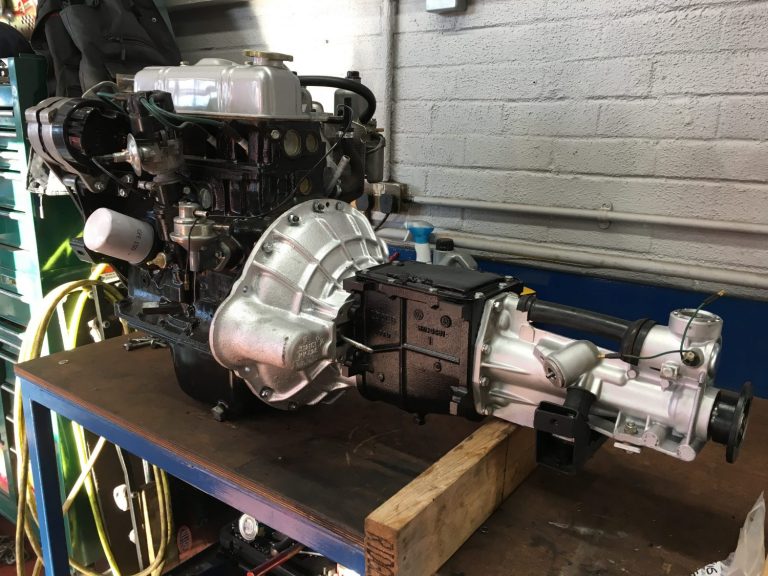
Whilst the car is away at the paint shop and with the engine removed we are able to tidy up the areas that are less reachable when inside the car. It’s a great opportunity for us to clean and repaint
As part of the project to improve the overall look of our 1949 Bentley Special we decided to re-colour the wire wheels in a deep red finish. A lot of the racing cars from the era used this colour wheel and we felt that it would really lift the look and styling of the car.
Once are now waiting on the aluminium panels to return from the polishers, we have a few improvements to the exterior that we would like to make and the whole car will undergo a full detail.
[vc_row][vc_column][vc_column_text]We are taking lots and lots of images whilst stripping down our 1965 Amphicar.
It is critical on all restoration projects to take as many pictures as you can as these may come in very useful when rebuilding the car.
[/vc_column_text][/vc_column][/vc_row][vc_row][vc_column][vc_gallery type=”image_grid” images=”16453,16454,16455,16456,16457,16458,16459,16460,16461,16462,16463,16464,16465,16466,16467,16468,16469″][/vc_column][/vc_row]
Due in soon are three new additions to the Bridge Classic Cars family. Currently residing in the north of Scotland, all in the one private garage we have a 1967 Austin A35, 1957 Morris 1000 Van, 1960 BSA. We originally visited to view the 1960 BSA scooter but no way could we resist these cracking little vans.
First up we have a 1967 Austin A35 Van – it looks to be originally used as the works vehicle for Ian Stephens of Walsall, Painters and Decorators.
Next up we have a Sutherlands of Portsoy sign written van. Our beautiful 1957 Morris 1000 van comes with the signage still visible and having carried out a little research (Googled the name!) we can confirm that Sutherland’s still runs very successfully to this day. Sutherlands of Portsoy is based in the small fishing village of Portsoy in the North- East of Scotland, they produce the finest Smoked Salmon for discerning customers around the world. The story of the van and it’s origins can be found here:
And finally, the reason for our initial visit; our very rare 1960 BSA scooter with matching brand new helmet!
We are making good progress on our 1969 Jensen FF bodywork preparation.
Unfortunately age has gotten the better of the offside door so what we thought would be a relatively easy part of the project to correct a slight paint issue has turned into something slightly more alarming. Work is required to correct the area in question and to prevent it from reaching any further.
Nothing we can’t put right with a little more time.
[vc_row][vc_column][vc_column_text]A little over a year ago we took a call from an excited Mr McDonald who had just received confirmation that he was now the proud owner of an original, 1 owner, 1949 MG YT.
At the time, the car was living out in Cyprus but was due to board the ship any day to arrive with us in Felixstowe.
Some time later we received the call that she had arrived at the docks and would be making her way to our Ipswich workshops for what we thought would be a fairly standard recommission and health check.
As you can see from the day she arrived, this was not the case.
But after many months of hard work and a very emotional journey, here she is today, all complete and back to how she was when she left the factory back in 1949.
All that’s left to do now is the traditional completion photo shoot.[/vc_column_text][/vc_column][/vc_row][vc_row][vc_column][vc_gallery type=”image_grid” images=”16274,16275,16276,16277,16278,16279,16280,16281,16282,16283,16284,16285,16286″][/vc_column][/vc_row]
[vc_row][vc_column][vc_column_text]It’s been a while but we were assured by the previous owner that the engine did run so we thought we’d spend a bit of time this morning seeing if that was indeed was the case…[/vc_column_text][/vc_column][/vc_row][vc_row][vc_column][vc_video link=”https://www.youtube.com/watch?v=2JWf64_6mFM”][/vc_column][/vc_row][vc_row][vc_column][vc_column_text]…and with a little drop of fuel and a battery connection away she goes!
With the youngest member of the Ranson family, little Loick, now coming up to 7 months old, will he be having the same conversations that I have with my Dad in many years to come. Better still, will little Loick be having this conversation with his son or daughter, let’s hope so:
“So we’ve got a very rare Mercedes AMG GT Coupe coming in to the workshops. Found in a barn, hasn’t been run for years. Was originally silver with red leather but in need of a full a restoration.”
It’s difficult to think that this conversation could be a reality.
But for now, here is one of the most beautiful cars available in the world right now! It was an absolute pleasure to welcome the McDonald family into the Bridge Classic Cars workshops today and what a car to arrive in…the stunning Mercedes AMG GT Coupe.
Come and race through 70 years of passion, glamour and design innovation, with unique behind-the-scenes access to one of the most iconic car brands at the Design Museum.
Experience every extreme high and low, from the beginning to the present.
See the very first Ferrari to Michael Schumacher’s winning Formula One car and even the newest hybrid model.
Visitors will be able to take a behind the scenes look into the design and engineering process, Enzo Ferrari’s life, the rich racing history and the famous clientele. Rare cars and memorabilia that can normally be seen only in private collections will be on display in London.
The Design Museum, 224-238 Kensington High Street, London, W8 6AG
[vc_row][vc_column][vc_column_text]With the engine now out of the car Dave can concentrate on removing the final remaining pieces ready for the body shop to take over.[/vc_column_text][/vc_column][/vc_row][vc_row][vc_column][vc_gallery type=”image_grid” images=”16236,16237,16238,16239,16240,16241,16242,16243,16244,16245,16246,16247,16248,16249,16250,16251,16252,16253,16254,16256,16257,16259,16260″][/vc_column][/vc_row]
Throughout the build, we have taken lots of pictures of the exterior of our 1949 MGYT but probably not so many of the underside.
As we have her on the ramp to check over everything now is the perfect opportunity to see a different angle.
[vc_row][vc_column][vc_column_text]Last Saturday Bridge Classic Cars joined the thousands of visitors at the UK’s biggest annual classic car show; The Lancaster Insurance Classic Motor Show 2017 held at the Birmingham NEC.
It is incredible to see just how large the show has grown, this year occupying over 5 halls of the world famous venue.
Check out the fantastic review from the Telegraph but first, see our photos from the day.[/vc_column_text][/vc_column][/vc_row][vc_row][vc_column][vc_gallery type=”image_grid” images=”16180,16181,16182,16183,16184,16185,16186,16187,16188,16189,16190,16191,16192,16193,16194,16195,16196,16197,16198,16199,16200,16201,16202,16203,16204,16205,16206,16207,16208,16209,16210,16211,16212,16213,16214″][/vc_column][/vc_row]
We’ve received more images from the body shop of our Jensen FF bonnet and wing being stripped back.
We’ve received some fantastic images today of our building on Deben Road back in what we believe was the 60’s.
As you can see, it’s not looking at it’s best but still great to see and know the history.
[vc_row][vc_column][vc_column_text]After years in storage we are now underway with the restoration of our 1965 Amphicar. Today we are running up and testing our the engine and propeller system to ensure it functions as it should.[/vc_column_text][/vc_column][/vc_row][vc_row][vc_column][vc_video link=”https://www.youtube.com/watch?v=u0Bb2a6J4Wo”][/vc_column][/vc_row][vc_row][vc_column][vc_video link=”https://www.youtube.com/watch?v=QOdTWQZIl64″][/vc_column][/vc_row]
Work is well underway now on our 1969 Jensen Interceptor FF. She’s in for some paintwork issues that need our attention on the front, in particular the bonnet and off side wing.
This work involves stripping back and respraying the bonnet and as you can see from the pictures, a lot of filler has been used previous which we will need to address.
[vc_row][vc_column][vc_column_text]Dave is now well on with stripping back our 1965 Amphicar ready for paint. We have since discovered that the original colour was white and not red as we first thought so we will be reverting back to the original specification in the paint shop.
We are taking lots of images as we progress with the re-build to ensure we have a good selection to reference if we need to.
[/vc_column_text][/vc_column][/vc_row][vc_row][vc_column][vc_gallery type=”image_grid” images=”16129,16130,16131,16132,16133,16134,16135,16136,16137,16138,16139,16141,16142,16143,16144,16145,16146,16147,16148,16149,16150,16151,16152,16153,16154,16155,16156,16157,16158,16159,16160,16161″][/vc_column][/vc_row]
[vc_row][vc_column][vc_column_text]As we always say, it is very important to take lots of pictures when carrying out a restoration. Angles you don’t think are important and areas you think may be easy to refit can sometimes come back to bite you.
If you find yourself scratching your head because you can’t quite remember what went where then having ‘too many’ pictures might be your saviour.
We are now looking to remove and/or tidy the dash wiring on our 1965 Amphicar. As you can see, it is a bit of a mess behind there as things stand.[/vc_column_text][/vc_column][/vc_row][vc_row][vc_column][vc_gallery type=”image_grid” images=”16219,16220,16221,16222,16223,16224,16225″][/vc_column][/vc_row]
Whilst the aluminium parts are off the vehicle being polished it was a good opportunity for us to improve a couple of small areas that require paint.
The steel straps that hold in the fuel tank have been hand painted the same colour as the body colour, these will be stripped back and repainted black.
And the rear cover that was hinged in position and holds the spare wheel in place has been altered. The hinge was bent and twisted so we have removed the hinge completely as it is not essential and where the modifications have been done has left unpainted areas. The whole section will be colour matched and resprayed.
Now the majority of the ‘cutting out’ has been done Asa has securely fitted up the inner sill on the near side of our 1983 Ford Capri.
Here we have the offside sills now removed.
The outer sills have now spot welded.
[vc_row][vc_column][vc_column_text]More than 120 years after the very first run was held, last Sunday saw 2017’s Bonhams London to Brighton Car Run and Bridge Classic Cars was there to experience the event for ourselves.
We even bumped into some familiar faces too, here’s Gordon with the host of BBC Radio 2’s Breakfast Show, the legendary Chris Evans.
Bonhams London to Brighton Veteran Car Run is the world’s longest running motoring celebration.
The vast number of entrants, from across the globe, who continue to participate in the Bonhams London to Brighton Veteran Car Run supported by Hiscox pays testament to the ever-growing popularity of this event.
In true tradition, the Run takes place on the first Sunday of every November and commemorates the Emancipation Run of 14 November 1896, which celebrated the passing into law of the Locomotives on the Highway Act. It was this Act that raised the speed limit for ‘light locomotives’ from 4 mph to 14 mph and abolished the requirement for these vehicles to be preceded by a man on foot. The early law required the man on foot to carry a red flag but that requirement was abolished in 1878. The Locomotive Act was still widely known as the ‘Red Flag Act’ and, to mark this milestone, a red flag was symbolically destroyed at the start of the Emancipation Run, just as it is today before the start of the Run in Hyde Park.
In 2017, as ever, the Run represents a rare opportunity for participants to take their extraordinary automobiles on this historic 60-mile journey from Hyde Park in central London to the seafront in the Sussex resort of Brighton. Few events in today’s international calendar can claim such individuality, personality and character as the Bonhams London to Brighton Veteran Car Run supported by Hiscox, where over 400 examples of pre-1905 manufactured vehicles enter the pioneering spirit and engineering ability of the early motorist.[/vc_column_text][/vc_column][/vc_row][vc_row][vc_column][vc_gallery type=”image_grid” images=”16019,16018,16017,16016,16015,16014,16013,16012,16011,16010,16009,16008,16007,16006,16005,16004,16003,16002,16001,16000,15999,15998,15997,15996,15995,15994,15993,15992,15991,15990,15989,15988,16021,16080,16079,16078,16077,16076,16075,16074,16073,16072,16071,16070,16069,16068,16067,16066,16065,16064,16063,16062,16061,16060,16059,16058,16057,16056,16055,16054,16053,16052,16051,16050,16049,16048,16047,16046,16045,16044,16043,16042,16041,16040,16039,16038,16037,16036,16035,16034,16033,16032,16031,16030,16029,16028,16027,16026,16025,16024,16023,16022″][/vc_column][/vc_row][vc_row][vc_column][vc_text_separator title=”Children In Need Bus”][/vc_column][/vc_row][vc_row][vc_column][vc_gallery type=”image_grid” images=”16083,16084,16085,16086,16087,16088,16089,16090,16091,16092,16093,16094,16095,16096,16097,16098,16099,16100,16101,16102,16103,16104,16105,16106,16107,16108,16109,16110″][/vc_column][/vc_row]
[vc_row][vc_column][vc_column_text]Day 1 of owning our 1965 Amphicar and already we are getting stuck in to stripping her ready for a full body preparation and re-spray.
Lots of photos of this project I think. Photographs are a great referencing tool, an angle you might think is a bit boring or pointless might end up being a crucial photo later on in the project.
Here she is, straight out of the trailer and in front of our front doors.
[/vc_column_text][/vc_column][/vc_row][vc_row][vc_column][vc_gallery type=”image_grid” images=”15950,15951,15952,15953,15954,15955,15956,15957,15958,15959,15960,15961,15962,15963,15903″][/vc_column][/vc_row]
[vc_row][vc_column][vc_column_text]This afternoon we removed the large items of aluminium from the car ready to transform them with a good polish.
We’ve drafted in the help of our good friend Tony and the guys at Wyatt Polishing to complete this task. With the tools and machinery they have at their fingertips sometimes it’s worth sitting back and assessing how long it may take you to do something when you can call upon the experts who can probably carry out the task in half the time.
[/vc_column_text][/vc_column][/vc_row][vc_row][vc_column][vc_gallery type=”image_grid” images=”15947,15946,15945,15944,15943,15942,15941,15940″][/vc_column][/vc_row][vc_row][vc_column][vc_column_text]P.S. Based on my ‘half the time’ theory I think we could’ve had this all done in 2 days so Tony, I’ll see you tomorrow with it all :)[/vc_column_text][/vc_column][/vc_row]
Work is now underway on our 1949 Bentley Special Mark VI.
Our work is very minimal on this project. Mechanically she is fantastic but we felt that a few small alterations to the look would make a huge difference. The aluminium bonnet and tank will be removed and re-polished, the exterior lighting will be replaced with age related components rather than the modern aftermarket option.
Work is now underway and we should see a vast difference in a relatively short space of time.
It was a long day for Craig and Dave as they set off for what should’ve been a relatively easy trip to Brighton. We had our 1973 Jaguar E-Type to deliver and returning with our 1949 Bentley Mark VI Special and 1965 Amphicar. The journey there seemed relatively trouble free but the same couldn’t be said for the return leg.
What should’ve been a 3 hour trip turned into a 7 hour trip with the M25 around Dartford being at a stand still for hours.
It wasn’t all bad as we had this beauty sitting beside us for the entire journey, a stunning Jaguar E-Type roadster. We were very impressed with the fact that she kept up with the modern day traffic congestion brilliantly, covering approximately 2 miles in 3 hours, that’s good going!
First off the trailer was our 1973 Jaguar E-Type (WWB 493L) looking glorious in the Brighton sunshine.
Then on to loading up the 1949 Bentley Mark VI Special onto Dave’s open trailer.
Before finally loading up the 1965 Amphicar into Craig’s covered trailer.
Our 1973 Jaguar E-Type 2+2 Series 3 arrived with us needing very little. She was very much a usable car so a quick re-tune to the engine before a thorough clean and detail and she was good to go.
Her final destination was Brighton so we were all in bright and early this morning (5am to be precise) to get her loaded up before Craig and Dave set off on the journey.
[vc_row][vc_column][vc_column_text]We have now so close to completion on our 1949 MGYT restoration project.
We are just waiting on a part to be manufactured for the side screens and then our final task is the jacking ram system. Having sourced a set of original rams we needed the assistance of a hydraulic expert to help free them up and undo years of corrosion.
Unfortunately they were unable to release the rams so the system is now back with us for plan B.
Lucky for us, the project can complete with or without the rams in place so these can be fixed into position at a later date.
Here are a selection of images taken last week, the registration plate has now been fitted as well as the brand new hub caps.
It’s the littler items of a restoration that seem to make the biggest difference.
[/vc_column_text][/vc_column][/vc_row][vc_row][vc_column][vc_gallery type=”image_grid” images=”15876,15877,15878,15879,15880,15881,15882,15883,15884,15885,15886″][/vc_column][/vc_row]
[vc_row][vc_column][vc_column_text]It’s collection day of our 1991 TVR SEAC and we couldn’t resist taking our newest addition out for an extra long drive.
On the way back from East Bergholt our first stop was Raydon airfield for a photo opportunity.
[/vc_column_text][/vc_column][/vc_row][vc_row][vc_column][vc_gallery type=”image_grid” images=”15838,15837,15836,15835,15834,15833,15832,15831,15830,15829,15828,15827,15826,15825,15824,15823,15822,15821,15820,15819,15818,15817,15816,15815,15814″][/vc_column][/vc_row][vc_row][vc_column][vc_column_text]We then called in to visit someone in Westerfield so another photo opportunity to be had.
You can never have enough photos!
[/vc_column_text][/vc_column][/vc_row][vc_row][vc_column][vc_gallery type=”image_grid” images=”15841,15842,15843,15844,15845,15846,15847,15848,15849,15850,15851,15852,15853,15854,15855,15856″][/vc_column][/vc_row][vc_row][vc_column][vc_column_text]Final stop…home. Her she is outside Bridge Classic Cars HQ being admired by everyone who passed by.
[/vc_column_text][/vc_column][/vc_row][vc_row][vc_column][vc_gallery type=”image_grid” images=”15857,15858,15859,15860,15861,15862,15863,15864″][/vc_column][/vc_row]
The Near-side inner and outer sill has now been completely removed from the vehicle ready for it to be replaced with new. The body panels are now in stock with us so Asa will be busy piecing the car back together soon. Hopefully we are almost passed the cutting out stage.
The car continues to hold it’s strength during this process using bespoke strengthening bars that we have fixed into position prior to the works going ahead.
The new sills are being temporarily fitted up to ensure that they fit neatly into position, this is a very important exercise to do as you do not want to fully commit without being confident that the panels fit where you need them to.
It was a tight squeeze but our 1960 Jensen 541S prototype engine is now back in the car ready for the ancillaries to be fitted back up.
All of the brake and fuel lines are in as is the gearbox, axle and propshaft.
Today, John has been fitting up the carbs.
Whilst the car is away at the paint shop and with the engine removed we are able to tidy up the areas that are less reachable when inside the car. It’s a great opportunity for us to clean and repaint the engine and gearbox to freshen up the look.
We use cookies to deliver the best possible experience whilst visiting our website. By clicking "Accept All", you consent to our use of cookies, or you can manage your preferences by clicking the link below. You can manage your preferences at any time from out Cookie Policy page.